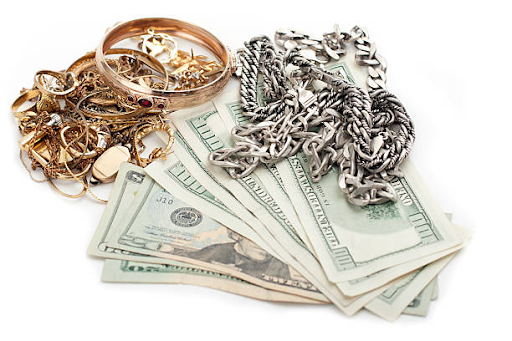Silver (Ag) is a metal that is known to be soft, white and lustrous. It contains the highest electrical conductivity and reflectivity of any metal. Silver has also long been valued as a precious metal.
This is where its use in bullion, i.e. silver investment coins, bars and rounds comes from. In addition to these investment uses, and in order to understand them better, we made this list.
A strong argument in favour of silver investing is, in fact, that the precious metal is highly relevant to numerous day-to-day uses. Like gold, we commonly associate silver with wealth. Unlike gold, and leading to some arguments that silver is undervalued compared to gold, silver is everywhere. In this article, I answer how is silver used in everyday life by looking first around the home, then industry, and only then at your wallet.
The easiest answers to how is silver used in everyday life are found around the house.
1. Silver Jewellery
If reading this, you think that “Silver Jewellery” is a cop-out for first place on how is silver used in everyday life, at home, you’re right. So what? While not every family can afford gold jewellery, silver is everywhere. And there is a good reason for that. At the time of sell silver and gold, the gold vs silver ratio is hovering around 1:85. That means jewellery manufacturers are going to pay 85 times more for gold.
Sterling silver contains 92.5% silver with the rest being copper or another element in order to add strength and durability to the product. Not only does Tiffany sell an overwhelming amount of silver, but their premiums are some of the highest in the industry. Combine that with cheap silver trinkets and souvenirs from exotic destinations, and you’ll have a drawer full of it by 50.
2. Silverware: Flatware, Serving Pieces, and Decorations
Silverware has an interesting history that makes it a clear candidate to explain how is silver used in everyday life. Generally speaking, I am referring to sterling silver. That is to say, 92.5% silver, with other metals such as copper mixed in. Yes, there are other kinds of Silver. Most commonly, Silver alloys used for the home are at least 80% (coin grade Silver – you will hear more about this shortly). On the flipside, no pun intended, are silverplated pieces. Ironically, there is significantly more silverplate then Silver alloy.
Asking how is silver used in everyday life requires us to look back in time. Since early Roman times, Silver has been used to make cutlery. As it is the case today, only the upper middle class has ever been able to afford to eat on something that must be polished periodically (and ought not to be put in a dishwasher). Interestingly, household silver was an especially important store of value for women, anyone that they could contribute to a marriage.
3. Silver Coins and Investments
Throughout history, silver has been used towards currency, specifically coins. As a precious metal, silver is rare as well as valuable, making it a convenient store of wealth. Canada, for example, issued silver dimes, quarters and half-dollars until 1968. Between 1920 and 1967, Canadian coins contained 80 % silver. In 1967, the composition of silver went from 80% to 50%. In 1968, the composition of coins was changed to mostly nickel.
The fact that silver did not corrode and only melted at a high temperature, meant that it could last, and the fact that it has higher lust made it attractive. Its malleability made silver a good choice for designing and minting local currency. Nevertheless, silver retains its value as a commodity. Many individuals choose to invest into silver through purchasing either coins or even pure silver bullion bars.
4. Uses of Silver in Medicine and Healthcare
In an article on Silver’s medicinal properties, Clement and Jarett explain that “The antibacterial activity of silver has long been known and has found a variety of applications because its toxicity to human cells is considerably lower than to bacteria.” Interestingly, silver is used in the medical field, in both various medications and machines. Silver sulfadiazine is used as a topical cream to treat burns. Silver Nitrate is used in the treatment of warts. Silver halides are being used in conventional x-ray film as image receptors. Silver is used in implants and prosthesis in order to reduce infections. Dental filings are often composed of liquid mercury along with powder mixture of silver, copper, and tin. Silver needles and sutures are also used by surgeons to close up wounds.
5. Uses of Silver in Electronics
Another use of silver is in the electronics industry. Silver’s thermal and electrical conductivity among metals means it cannot be replaced by less expensive ones. Examples of silver used in electronics are electrical switches and cars. Silver paste is used in the rear defrost of many vehicles. Nano silver (silver with a very small particle size), provides a new frontier for technological innovation, requiring much less silver to get the “job” done.
6. Uses of Silver in Mirrors and Glass
Interestingly, silver is almost completely reflective when polished. Since the 19th century, mirrors have been made by coating a transparent glass surface with a thin layer of silver. Many windows of modern building are coated with a transparent layer of silver that reflects sunlight, keeping the interior cool in the summer.








